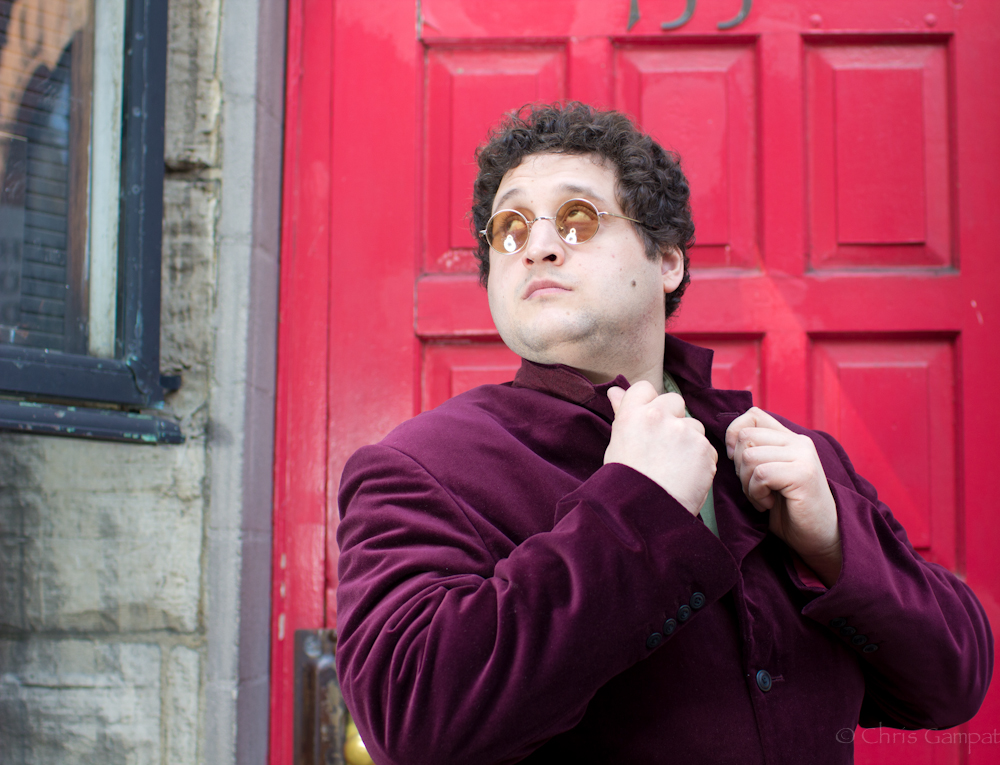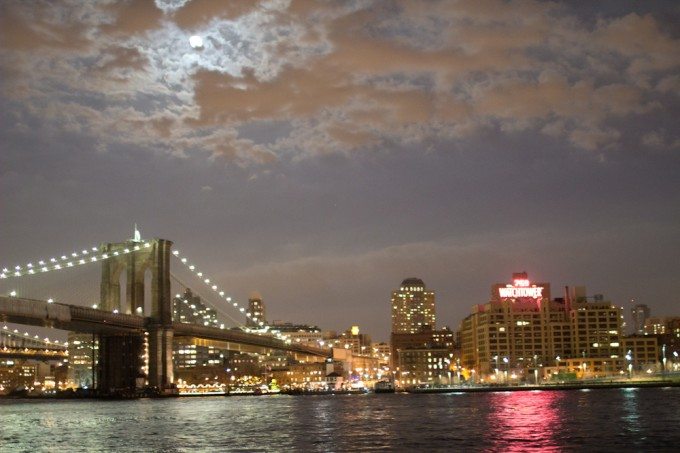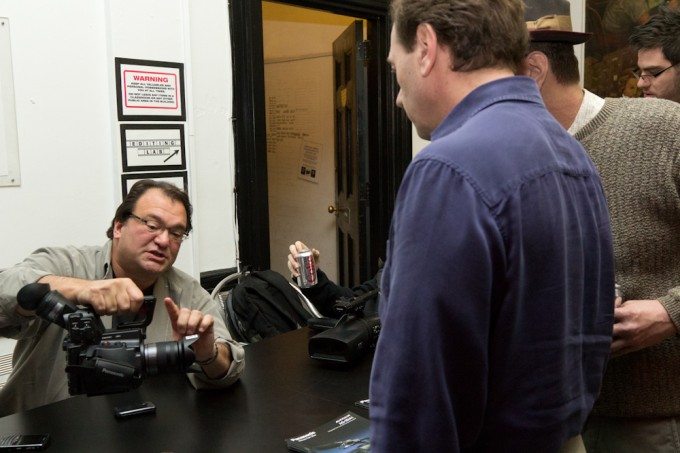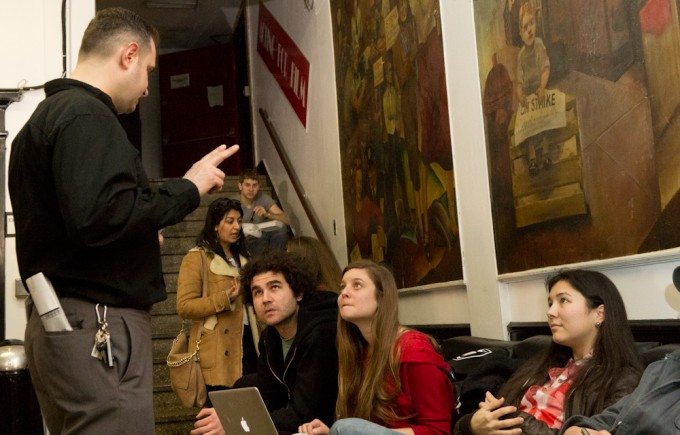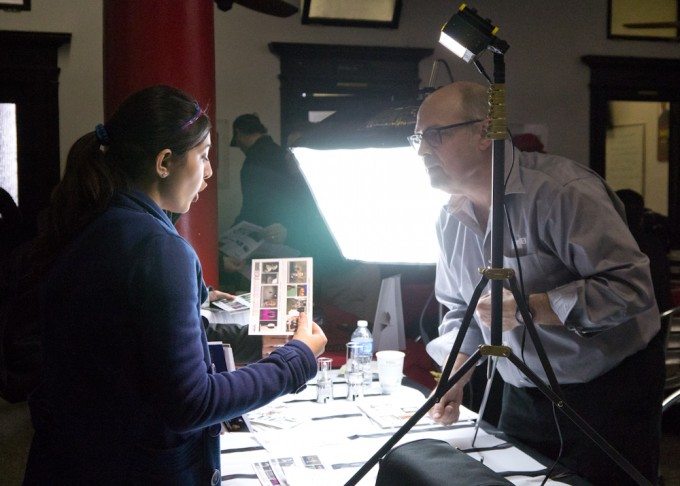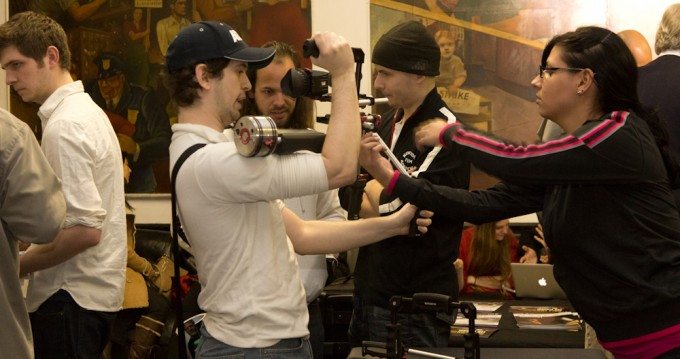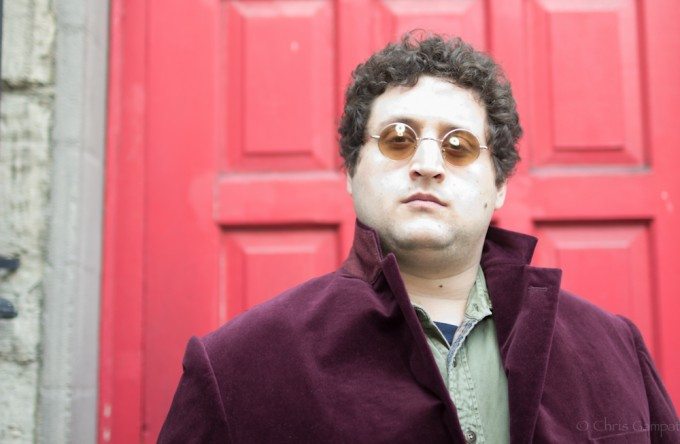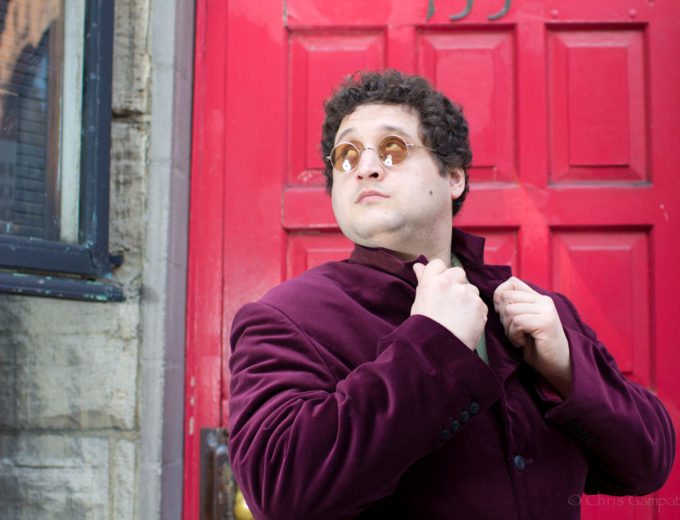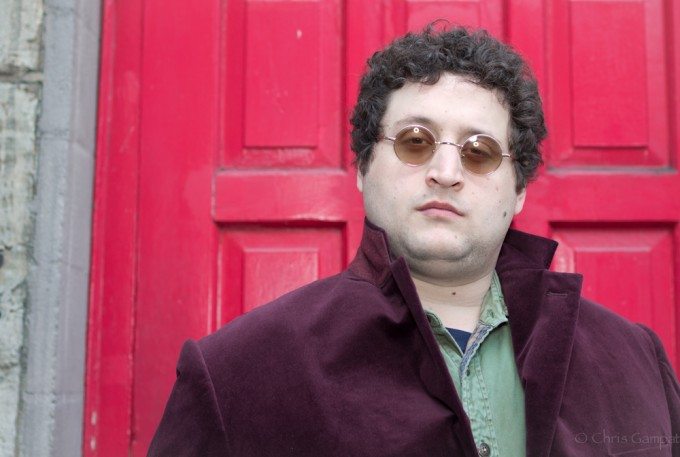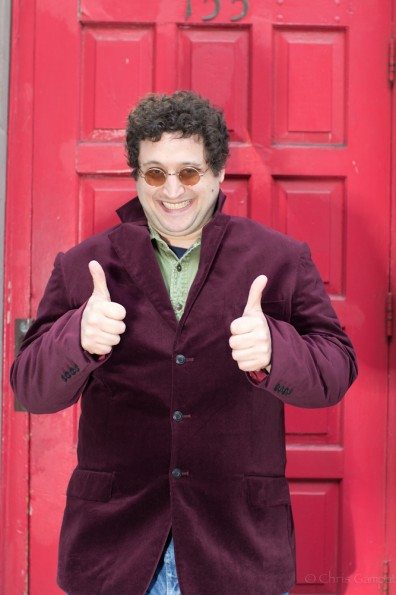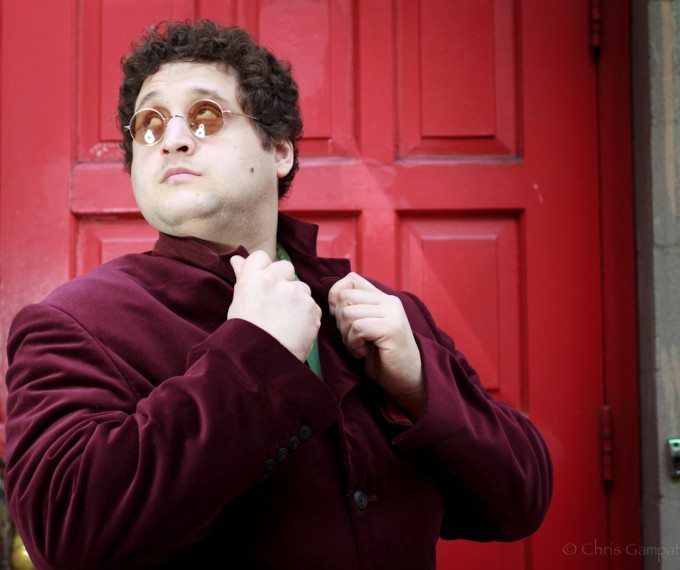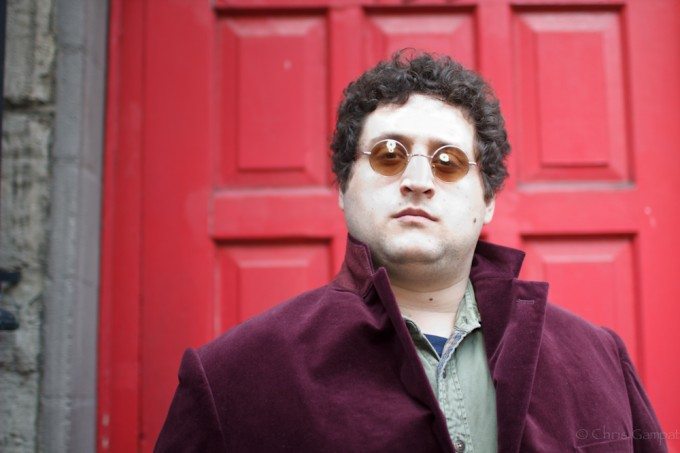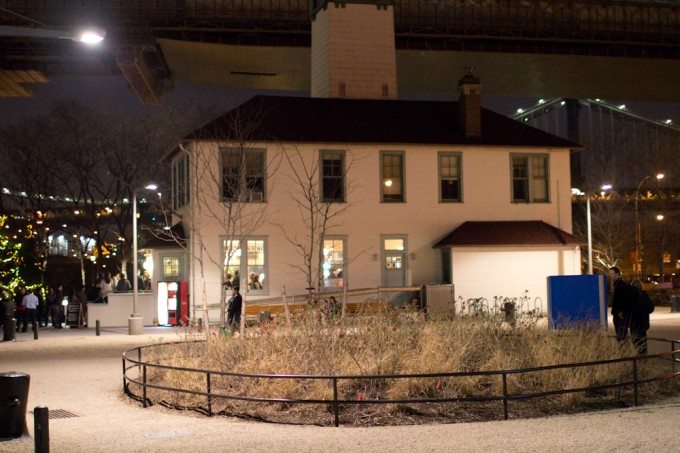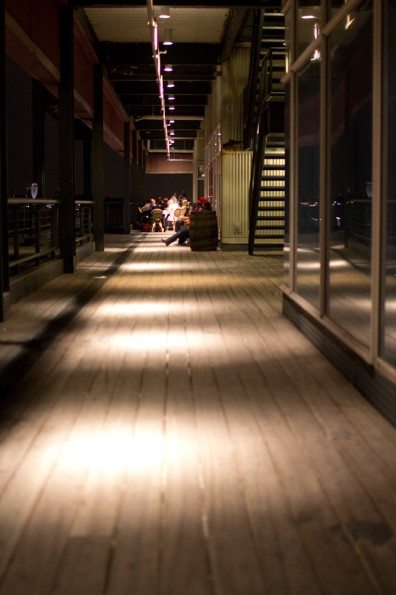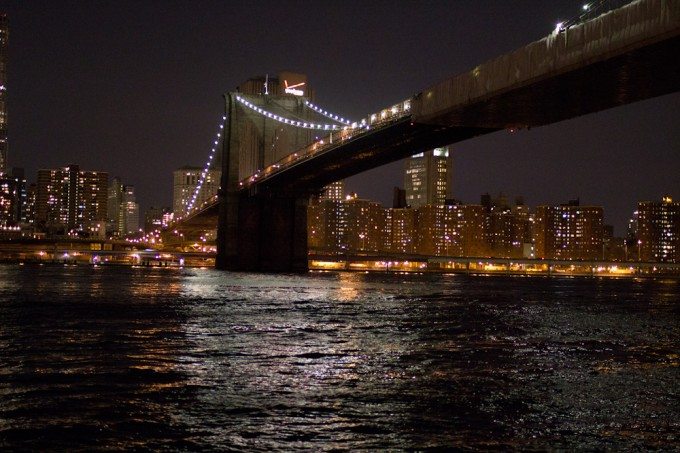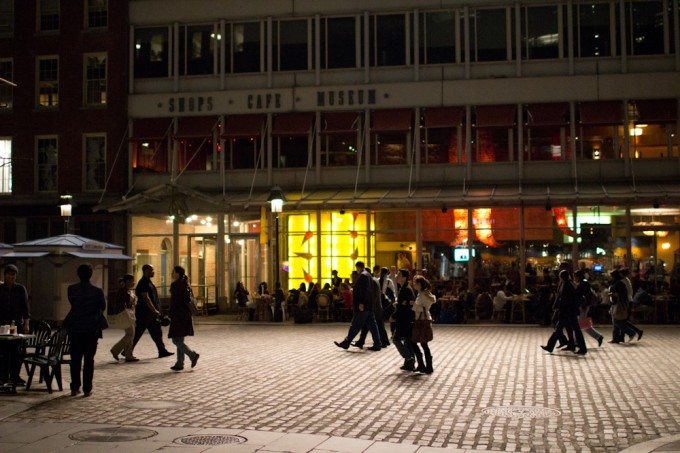Last Updated on 03/30/2011 by Julius Motal
We’ve tested the Canon T3i in shooting portraits, then night street photography scenes, in Day 1, we gave some first impressions of the Canon T3i and we also did a quick video test. We tested the camera’s creative filters, and now we give our verdict on the battery life and on the camera’s performance in non-stop use.
Event Shooting
The other day at work, I was tasked with heading down to the New York Film Academy and documenting an event set up by the B&H EDU Dept called “Tools of the Trade.” I brought along some spiffy tools myself, but this event was for educating students on some of the latest and greatest gear out there. This way, students could see what’s available to them to help them make better films.
Gear Used
Small Bounce Card Rogue Flashbender
Those of you that have read this site for a while know that I prefer to use primes over zooms. Why did I choose a zoom this time around? I really didn’t know what I was getting into and have never been to the New York Film Academy before. So it seemed like the safest option. I also brought along the small bounce card to see what it would be like in practice at an event.
To be quite honest, the T3i suffered from some major autofocus delay problems: even with the infrared assistance from the 580 EX II.
Trying to switch focusing points became very annoying in many situations because it requires pressing one button, then another, then another, then another. It wasn’t as quick as using camera like the 60D and higher end models. This lead me to change up my shooting strategy: I couldn’t react to moments. Instead, I needed to plan ahead and just wait for things to happen.
Because of these problems, I wouldn’t recommend using the Canon T3i for event shooting. The focusing algorithms and manually changing settings isn’t very efficient.
What worked very well though was the fact that I could use the LCD screen to compose images above my head and in weird angles because of the fact that it flips out.
All the while of shooting the event, the Eye-Fi card transmitted the images back to my laptop at the office. That made editing when I got back much simpler and faster. What was a damper was the fact that I shot over 200 images in RAW and had to narrow them down to around 17 images. Oh man, that wasn’t fun.
More Portraits
Former Premium Compact Specialist Will Greenwald and I went to hang out around Midtown Manhattan and explore different antique and thrift stores. He picked up this amazing coat, and I told him previously that I wanted to do a quick portrait session just to test out some new gear. He agreed.
Gear Used
Impact Strobros Beauty Dish with silver disk
FYI: Lightroom 3 isn’t exporting the images the way that I see them right now for some odd reason. Excuse the technical mistakes.
This was a very quick and impromptu shoot that took all of around seven minutes. When I found the door of this church, I stopped Will very quickly and said that we should do the shoot here.
On the right hand side, there is diffused sunlight that is actually blocked by a building. On the left is the Impact Strobros beauty dish attached to my 580 EX II and fired through the T3i’s infrared TTL control.
Notice the ring light in Will’s glasses. This is the Impact Strobros. As for posing, I positioned Will so that his shorter shoulder was behind. Though I’ve learned not to do this, it was an intentional decision to make him look a bit tougher and to illuminate that side of him better. For this photo and the opening one in this section, the strobe is in the camera’s hot shoe.
I tried doing the above photo twice, and nailed it the second time. For this photo, I almost wanted to make him look a bit like the Joker (from Batman and because Batman is awesome) since he has the nice purple jacket and a green shirt on. For this photo, I had to angle the strobros a bit more towards his frontal area to properly and evenly expose it.
So did I have any complaints? Not at all. In fact, I felt that the Rebel really shined and that someone like a college student would greatly benefit from purchasing this combo or something similar.
Todd Owyoung is the man when it comes to beauty dishes. If you’d like to learn more about them, you should really study his work. And if you like DIY projects, you should take a look at his video. Hell, if he’d make one for my 580 EX II, I’d buy it from him in a heartbeat.
That’s not to say that the strobros is bad at all. It’s just a bit too small of a lightsource and so the lighting can be harsher than I’d like at times.
More Night Scenes
The Canon T3i has shot night scenes previously in the review, but there is something about going out and exploring new places that really makes having a camera like this and good glass even better. Those considering purchasing the camera should consider some good, cheap glass and our recommended lens list.
Gear Used
Almost all of my images shot this night were wide open at F/1.4, so it allowed me to keep the high ISO levels down a bit more. Though at times, I often wished that I had a zoom lens or a wider angle, the combo faired very well for me. In cases like this, it is often best to use Spot Metering, shoot in RAW, and work to try to save the image in post-production afterwards. It can be difficult to achieve the best images in-camera.
What made this camera really shine was the flip-out LCD screen which helped me compose in ways that I didn’t think of before. I also found that using the contrast detection focusing vs the phase detection focusing sometimes seemed to be more accurate. If you choose to use the LCD screen to compose your images and shoot in a discrete fashion so that people won’t be suspicious of you, then you’ll have no need to worry about whether or not the focusing system will work the first time around.
Granted though, it can be slow at times.
I recorded a bit of video this night. Though I’m not showing it here, the video quality was indeed quite gorgeous. Why am I not showing it? Because of the fact that when I was manually focusing in and out, the camera became very shaky. For these reasons, I recommend the Zeiss 35mm F/1.4 and 85mm cinema prime that I tested a while back.
We recently had a commentor state in a previous review that if you have to shoot higher than ISO 1600 that you don’t need faster glass, but that you need a flashlight.
This was one of those situations where I could demonstrate to said commentor that they could not be more wrong. High ISOs are needed for the photographer to be able to stop fast moving action at night in situations where a flash isn’t practical. Additionally, you really can’t shine a giant flash light over all of NYC to help in a situation like this.
And with that, the Canon T3i review has ended. Coming soon, the complete review.
Please Support The Phoblographer
We love to bring you guys the latest and greatest news and gear related stuff. However, we can’t keep doing that unless we have your continued support. If you would like to purchase any of the items mentioned, please do so by clicking our links first and then purchasing the items as we then get a small portion of the sale to help run the website.


